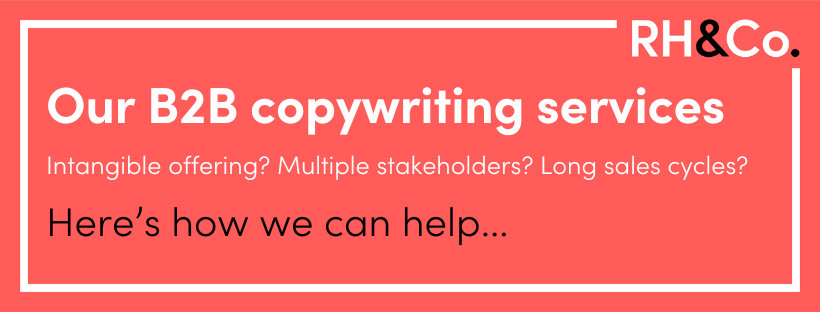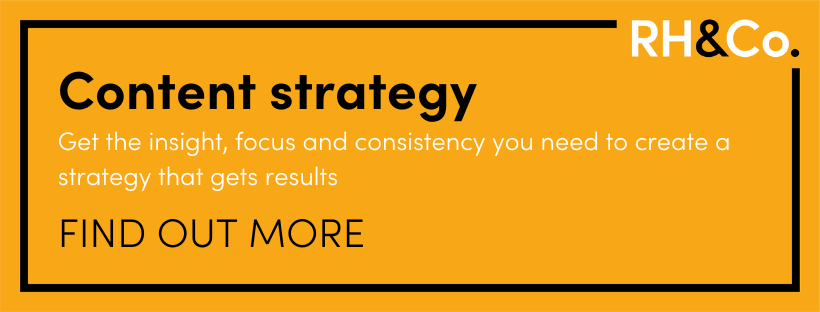

B2B brand building, lead generation and the 95-5 rule
What’s more important for B2B businesses: brand building or lead generation?
Naturally if you ask a PR agency, they’ll say brand building and if you ask a performance marketing agency, they’ll say the opposite. Some will say you need both, but what does that mean for your marketing plan’s time and budget? What does it look like in terms of ratios? 60:40? 80:20? 50:50?
The answer will depend on many factors: your audience, your market, your growth stage, and the nature of your product or service. If you were looking for exact percentages, I’m afraid you won’t find them here or anywhere else (unless that place is trying to sell you PR or lead generation).
Instead we’ll give you some food for thought on what your priorities might be. But first, some definitions…
TL:DR
- What is lead generation?
- What is brand building?
- Which one gets results?
- The 95-5 rule of B2B marketing
- Long term vs short term marketing
- Creating a balanced marketing plan
What is lead generation?
We don’t really need to define lead generation, since it’s pretty self explanatory. Lead generation gets you leads.
It’s the world of Google search ads, social media ads, banner ads on websites, landing pages, – anything that can push people over the line to make a purchase then and there – or at least give some contact details so you can follow up with email campaigns or direct sales outreach later.
It’s also worth talking about growth marketing here. This is a relatively new term that encompasses a data driven, experiment-based, performance model that essentially prioritises lead gen. It experiments to find the optimum spend for different marketing channels, so that new businesses can acquire as many customers as possible for as little cost as possible.
“Ultimately brand building should shift how people think and feel about and towards a brand for the better.”

What is brand building?
Brand building is a bit more nuanced in terms of what it is and does.
Strictly speaking, anything that your business does to get noticed for the right reasons can be considered brand building. This makes it something that goes beyond the marketing department and into the remit of product design, customer service and even some aspects of HR.
Lead generation and brand building definitely overlap, especially when it comes to content. But there are tactics that lean more towards brand building than led gen, such as:
- CSR activities like sponsoring your local sports team or supporting a relevant charity
- Value-based content marketing such as producing helpful guides and other publications
- PR campaigns that widen your reach and boost your reputation with a certain market
Ultimately brand building should shift how people think and feel about and towards a brand for the better.
Which one gets results?
It’s pretty easy to measure how effective lead gen or growth marketing tactics are and prove their effectiveness.
You host a webinar and get 100 emails for your sales team to follow up on. You put money behind a LinkedIn campaign and get a dozen demo requests. These numbers can be tied fairly easily to the bottom line.
There’s a catch though – not all leads convert. Many companies throw loads of money at lead gen and see middling results. Either because they don’t get quality leads or they don’t have the content they need to nurture those leads once they get them. So it’s not as simple as more lead gen spend = more sales.
With brand building, attribution is far less obvious though. It’s unlikely that a football-loving Head of Procurement will see your brand’s logo on their team’s strip and immediately feel the urge to do business with you.
But what if your team sponsorship builds a positive feeling towards your brand in that Head of Procurement’s thoughts? And what if later they’re trying to choose between you and a close competitor? It may well be what pushes them over the line. You’ll never be 100% sure though.

The 95-5 rule of B2B marketing
The problem with B2B marketing is that only 5% of your target audience is likely to be actively looking to buy at any given time. The other 95% may well be interested in the future but not yet. This is the 95-5 rule, which came out of a recent study by Professor John Dawes and the B2B Institute.
It’s not like selling haircuts or manicures, where a pay-per-click campaign can quickly redirect someone searching for ‘manicures in Bristol’ to make a booking at your new salon. B2B buying decisions often involve an audience that doesn’t understand what you do, a product that they won’t need for two years, or a service with such a high price tag that people will conduct serious research before they commit to any kind of decision.
That means it’s potentially more important for your B2B marketing activities to build a positive impression of your brand rather than just attempt to generate a lead then and there. That way you’ll be able to engage the 95% as well as the 5%. And done right, you won’t just create a positive impression, you’ll create trust.
FURTHER READING: Reinventing the buyer’s journey: introducing the RH&Co content marketing framework
Long term vs short term marketing
Brand building will introduce you to a wider audience so that when they’re searching for solutions in one-to-five years, you at least make the shortlist.
But sometimes, you can’t wait that long. You need your product launch in three months time to hit the ground running; you need cash flow to cover the costs of your new hires, or you need to get in front of your early adopters so you can begin to build brand momentum. Here lead generation is your friend.
Once you have that traction, brand building can help sustain it. For many B2B businesses, referral partners are an important source of leads. Brand building fuels the conversation with these key contacts, creating brand advocates from people and businesses that lie outside of your direct target audience.
Brand building can also increase customer lifetime value. You’re far more likely to renew your contract with your design agency if they’ve just won a prestigious award, for example. You’re also more likely to recommend them to others in your network.
At Rin Hamburgh & Co, the overwhelming majority of our business comes through referrals, recommendations and ongoing clients. If we turned off all our lead generation taps tomorrow, there might not be much difference. Intriguingly, that’s exactly what happened recently with Uber, Airbnb, P&G, eBay and a whole long list of household names who decided they were through with performance marketing.
Creating a balanced marketing plan
So, back to our original question – how do you decide where to allocate the most time and budget when creating your marketing plan?
Well, as Peter Drucker said, “Long-term results cannot be achieved by piling short-term results on short-term results.”
If your company is in its early growth stage, you probably need to prioritise short term results so you can get some momentum going, keep the bills paid, and sprint to the next funding round. Lead gen might do you wonders, and stop you from getting distracted by vanity metrics. Your blog can play a vital role in attracting and nurturing those leads too.
But if your organisation is struggling to qualify leads, catch the attention of bigger clients, or needs to stand out as an authority in your field, you’ll want to focus more on brand building.
For the best results, try to do both, dialling one or the other up a notch as the needs of the business evolve. Taking the long term view of a brand marketer and combining it with the results-focused mindset of a lead gen marketer plus growth marketing’s experimental approach is a powerful strategy that will take you far.
For more insights into how to split your marketing budget, check out the business benefits of blogging – and how to sell them to your boss.








